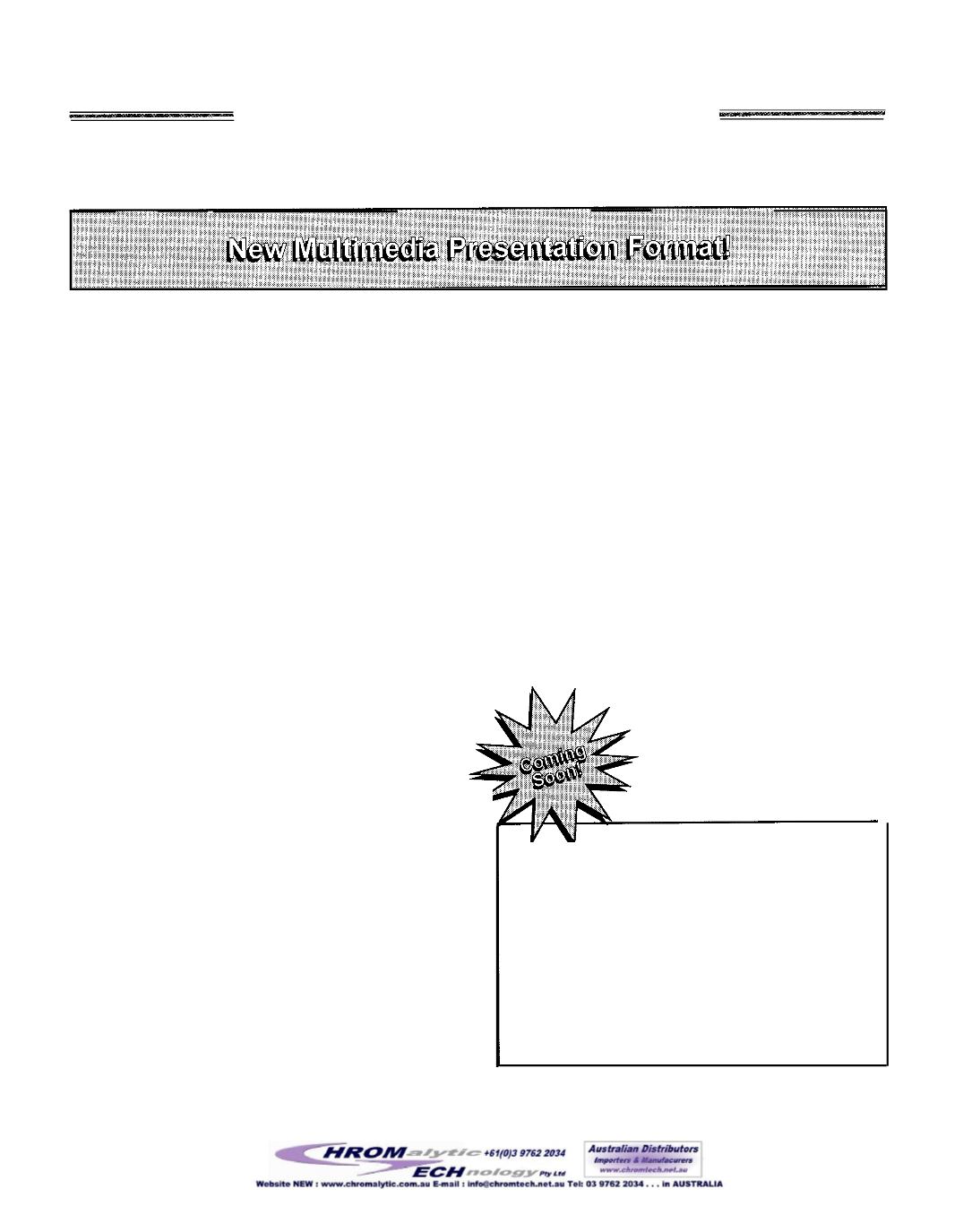
Educational Materials
Restek’s Capillary Chromatography Seminar
Our seminar is geared towards the practical aspects of capillary chromatography. Information used on a day-to-day
basis is presented. The following is a description of Restek’s general capillary chromatography seminar:
Capillary Background and Terminology
This section discusses the essential basics of capillary
chromatography. What are the differences between a packed
and capillary column? What types of capillary columns are
available to an analyst?Howdo theywork?Concepts of
chromatographic retention, separation efficiency, and
selectivity will be presented on a practical, rather than
theoretical level. Chromatographic equations and symbols
will be defined and applied in a user-friendly format.
Inlet Systems and Injection Techniques
This section focuses on how carrier gas flow is controlled in a
GC and discusses all of the common capillary injection
techniques including split, splitless, flash direct andon-
column, cool on-column, temperature programmable, and
purge & trap. Advantages and disadvantages of each injection
techniquewill be fullydiscussedwithhelpful hints onways
to optimize injector reproducibility.
Detection Systems
This section discusses background terminology pertaining to
detectors such as sensitivity, selectivity, and dynamic range.
Themost commonly used capillary detectors includingPID,
TCD, MSD, ECD, PID, ELCD, NPD, and FPD are fully
discussed with detailed detector specifications and operating
hints. Animation is utilized to demonstrate the sample flow
4
path and mechanism of detection.
Column Selection
This section utilizes many application chromatograms to
show chromatographers the practical effects of changing
column parameters. The effect of how column ID, film
thickness, and length affect both resolution and total speed of
analysis are demonstrated chromatographically to show
chromatographers how to utilize and optimize each of these
parameters. Stationary phase selectivity is demonstrated from
a structural and functional composition. The use of dual
column confirmational analysis is also discussed highlighting
different ways to perform the analysis depending upon the
instrument used.
Installation, Stand-by Operation, and Maintenance
This section discusses capillary carrier gas choice and how it
affects sample analysis times and resolution. It coverspre-
analysis instrument preparation, including regulator, trap, and
purifier use, and sleeve deactivation procedures, plus addi-
tional inlet and detector considerations. A trouble-free
installation sequence and proper column conditioning is
presented to prevent inadvertent column damage. Stand-by
operational hints are also discussed to maximize the column
lifetime. The column and systemmaintenance section
discusses how tominimize system problems and instrument
down time by performing routine systemmaintenance.
Prevention of column contamination is shown through the
use of packed inlets or guard columns.Ways to rejuvenate a
contaminated columnwill also be discussed. System integrity
can be monitored through test mixtures, selective indicators,
andGC optimization. Sources and solutions for common
problemswill be shown and discussed.
ApplicationSpecific Seminars from the Restek
Wizards:
l
GC
Method Development
l
Environmental
l
Clinical/Forensics
l
Petroleum
Have questions about the course content?Wouldyou
like an estimate for your location? Call (800) 356-1688
and ourmarketing department will be happy to answer
your questions.
26
26
1998


